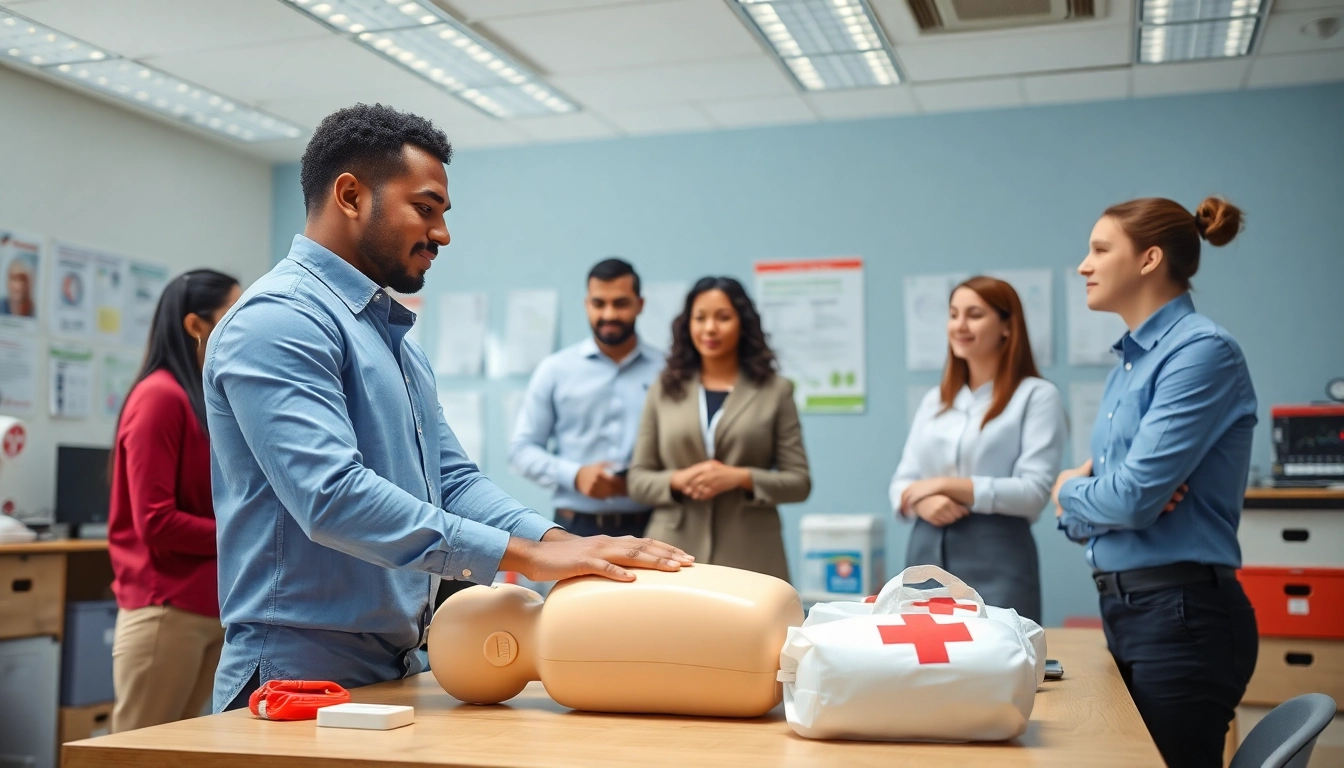Understanding Workplace First Aid Requirements
Workplace first aid is a critical aspect of ensuring the safety and well-being of employees in any organization. With the potential for accidents to happen at any moment, having a robust first aid program in place is essential not only for compliance with regulations but also for fostering a culture of safety. Organizations must understand the workplace first aid requirements, legal responsibilities, and how to effectively implement a first aid program to protect their workforce. This article will explore these facets in detail.
OSHA Guidelines for Workplace First Aid
The Occupational Safety and Health Administration (OSHA) has established guidelines and requirements for first aid in the workplace, reflecting the need for employers to provide adequate first aid coverage based on the specific hazards present in their environments. Employers must assess the types of hazards and the number of employees in their workplaces to ensure they have appropriate first aid measures in place.
According to OSHA, the guidelines stipulate the following key points:
- Employers must provide access to first aid kits and have emergency contact information readily available.
- Employers should ensure that trained personnel are designated to provide first aid in case of an emergency.
- First aid supplies must be available for the unique hazards present in the workplace.
Legal Responsibilities of Employers
Employers have a legal responsibility to maintain a safe work environment for their employees. This includes not only preventing hazards but also creating a well-prepared response plan for emergencies. Failure to comply with OSHA’s regulations can lead to significant penalties and legal repercussions. Employers must:
- Identify all potential medical emergencies related to their specific work environment.
- Train a sufficient number of employees in first aid, CPR, and other necessary emergency procedures.
- Periodically review and update their first aid program to reflect changes in workplace hazards, employee count, and training needs.
Key Components of a First Aid Program
A successful first aid program should include several essential components:
- First Aid Kit: Supplies should be appropriate to the risks within the workplace.
- Trained Personnel: Employees need to be trained to respond effectively to emergencies.
- Emergency Procedures: Clear and concise procedures should be established and communicated to all staff members.
- Regular Drills: Conduct emergency drills to maintain readiness among employees.
- Documentation and Review: Maintain accurate records of training, incidents, and any changes to the first aid program.
Types of Workplace First Aid Training Available
Training is a pivotal element in equipping employees with the necessary skills to handle emergency situations effectively. Various types of workplace first aid training can help ensure that employees can respond confidently.
Basic First Aid and CPR Training
This foundational training covers essential skills needed to handle common workplace injuries, such as cuts, bruises, sprains, and CPR for cardiac emergencies. Basic first aid training typically includes:
- How to recognize and respond to different types of emergencies.
- Basic life-saving techniques, including CPR and using an Automated External Defibrillator (AED).
- Understanding the principles of using a first aid kit.
Advanced Life Support Techniques
For workplaces with higher risks, advanced life support techniques are often necessary. This training goes beyond the basics, covering more complex situations such as:
- Advanced CPR techniques, including the use of airway adjuncts and specific medication protocols.
- Management of choking and severe bleeding cases.
- First aid skills for specific environments such as construction sites or healthcare facilities.
Customized Training Programs for Various Industries
Each industry presents unique hazards that require tailored training programs. Employers should consider:
- Assessing specific risks related to their operations and employee roles.
- Partnering with certified training agencies for industry-specific first aid programs.
- Implementing ongoing education to keep employees updated on the latest first aid practices and techniques.
Creating an Effective First Aid Kit
A well-equipped first aid kit is a cornerstone of workplace safety. It’s essential to ensure that kits are comprehensive, accessible, and tailored to the specific hazards and needs of the workplace.
Essential Items to Include in Your First Aid Kit
An effective workplace first aid kit should include a variety of supplies tailored to the hazards employees may encounter. Common items to include are:
- Adhesive bandages in various sizes for minor cuts and abrasions.
- Gauze pads and adhesive tape for larger wounds.
- Antiseptic wipes and ointments for cleaning injuries.
- Instant cold packs for sprains or strains.
- Basic first aid instruction guide.
- CPR face shield or mask for performing CPR.
- Scissors and tweezers for wound care.
- Any specific medications such as allergy relief or antiseptics as applicable.
Reviewing and Updating First Aid Supplies
It’s crucial to ensure that first aid supplies are not expired, depleted, or outdated. Employers should:
- Establish a regular inventory check (monthly or quarterly) for all first aid kits.
- Remove or replace expired items promptly to ensure effectiveness during emergencies.
- Engage employees in the process to create awareness about the contents and importance of the first aid kit.
Guidelines for Placing First Aid Kits in the Workplace
Accessibility is key when it comes to first aid kits. Consider the following guidelines:
- Place kits in easily identifiable locations known to all employees.
- Install kits near high-risk areas, such as factories, kitchens, or construction sites.
- Clearly label each kit and post instructions on how to use the contents effectively.
Emergency Procedures and First Aid Response
Having effective emergency procedures in place ensures that employees can respond promptly and effectively during medical emergencies.
Steps to Take in a Medical Emergency
In an emergency, follow these steps:
- Assess the situation: Ensure it is safe to approach before providing assistance.
- Call for help: Dial emergency services and inform them of the situation.
- Provide first aid: Administer appropriate first aid based on the training received.
- Stay with the individual until help arrives: Provide comfort and assurance.
Identifying Common Workplace Injuries
Awareness of common workplace injuries can help in quick response. Some prevalent injuries include:
- Slips, trips, and falls
- Cut and lacerations
- Burns and scalds
- Muscle strains and sprains
- Eye injuries
Employers should train employees to identify these injuries quickly to respond effectively.
Communication During Emergencies
Effective communication is paramount during emergency situations. Key points include:
- Establish a clear chain of command for emergency responders.
- Ensure all employees know how to report an emergency.
- Designate a location for assembly once first aid is administered or emergency services arrive.
Benefits of Workplace First Aid Training
Implementing a comprehensive first aid training program offers numerous benefits to both employees and the organization as a whole.
Reducing Workplace Accidents and Injuries
With proper training in first aid, employees are likely to respond more confidently and effectively to accidents, reducing the severity of injuries or preventing them altogether. This proactive approach fosters a safer work environment.
Enhancing Employee Confidence and Safety
Training programs instill confidence among employees in their ability to manage emergencies, contributing to a greater sense of safety within the workplace. This promotes increased morale and job satisfaction.
Creating a Culture of Safety Within the Organization
Prioritizing first aid training sends a clear message about the organization’s commitment to employee safety. This commitment helps in developing a positive safety culture, leading to:
- Increased employee engagement in safety programs.
- Reduced turnover rates due to a supportive work environment.
- Enhanced organizational reputation as a safety-conscious employer.
Conclusion
Workplace first aid is not just a regulatory requirement but a crucial element of a comprehensive safety strategy. By understanding OSHA guidelines, properly training personnel, equipping first aid kits, and establishing effective emergency response procedures, employers can significantly enhance workplace safety. Ultimately, the investment in first aid programs yields benefits that extend beyond mere compliance, contributing to a culture of safety and care within the organization.



